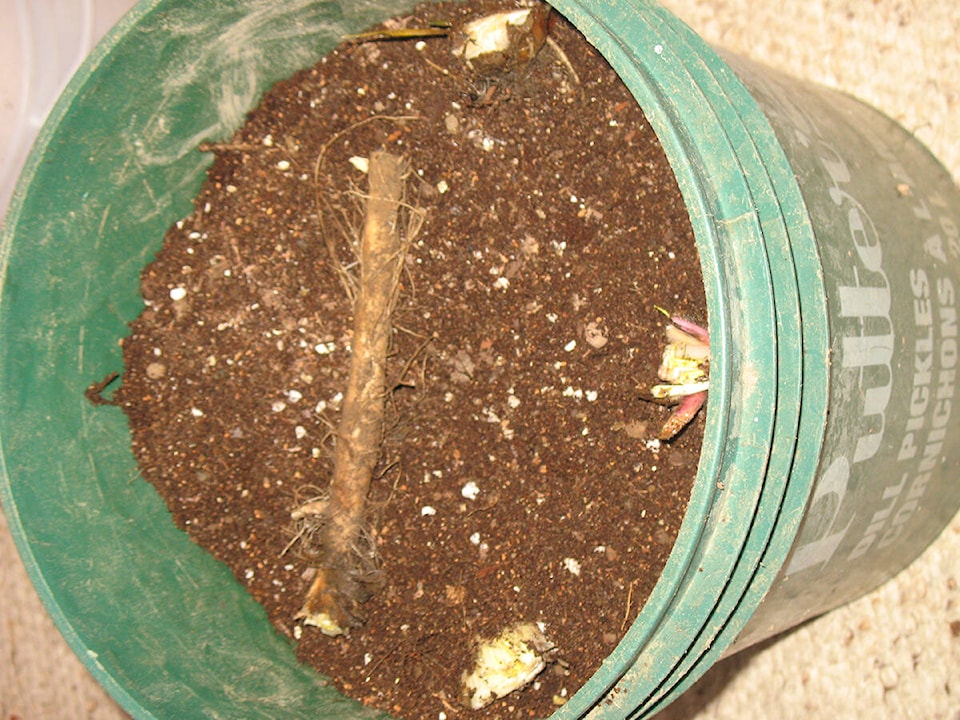By Mary Lowther
Glowing accounts of fresh chicory in winter had me planting bunches of this robust leafy vegetable in cold frames. It was so bitter that even the slugs left it alone, and I became suspicious of these writers and haven’t grown it since. Evidently I’m not the only one who has found chicory unpalatable because Belgian and Flemish growers in the mid-19th century developed a process called “forcing” that they applied to grow short blanched and crisp heads they called “chicons”. In her book Salad Gardening, Annie Proulx says this method produces “the most toothsome salad delicacies” and explains how to do it.
So I’m trying it again. Following her instructions, I sowed witloof chicory seeds last spring into a newly-dug bed augmented with compost and organic fertilizer and watched it grow all summer, planning to harvest the roots come fall. Unfortunately this new bed was not fertile enough because when I dug them up, instead of fat, robust roots like the picture in Proulx’s book, mine were spindly and thin. Undaunted, I dug up the largest four in hopes that I’d get something. I cut off the tops to within two inches of the root top and trimmed the bottoms away so I was left with roots about six to eight inches long, then laid them down sideways among damp leaves. Proulx suggested using sand or peat moss but one has to go with what she has so I figured that leaves would have to do.
These roots spent at least a month in the damp leaves so the roots will be “deluded into a wintertime mood”, and when a few at a time are brought out to grow chicons, the harvest can last all winter. As per Proulx’s instructions, I prepared a bucket of garden soil and compost (with a bit of organic fertilizer for good measure) and filled the bucket to within six inches of the top. The bucket should have holes in the bottom for drainage. I planted the roots in the soil with just the tops showing, then watered them well and covered the crowns with six inches of leaves (Proulx used peat or coir but since I didn’t have either, I went with what I had).
She says to then set the bucket in a dark room at a temperature of between 10 and 15 C. Higher temperatures will produce undesirable loose heads instead of the tight little heads we are attempting to create. In the dark the roots will force their points up and out of the sand (or in my case, leaves) and should be ready for harvest in three to four weeks. They will be quite brittle and can be snapped off above the crown. Smooth the sand back in place, water again and leave it in the dark for a second harvest. I can hardly wait!
Annie Proulx suggests a recipe for witloof chicory salad that I’ll try, and here it is:
6 to 8 chicons, sliced into bite-sized pieces
½ cup chopped walnuts
½ cup watercress, chopped into bite-sized pieces
1 small shallot shaved into paper-thin slices
1/3 cup olive oil and vinegar dressing.
Mix all together and let stand 10 minutes at room temperature before serving. 4 servings.
Please contact mary_lowther@yahoo.ca with questions and suggestions since I need all the help I can get.
